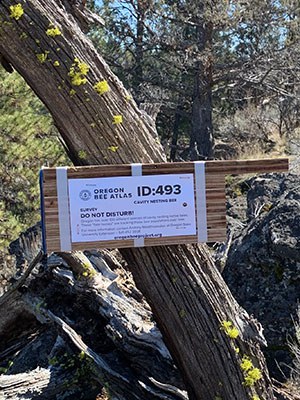
The Oregon Bee Atlas is a project where volunteers are working to document all the different bee species in Oregon. The bee nesting houses will help collect bees from different regions around the state so scientists have a better picture of our native bees and their distribution. The Oregon Bee Project estimates that there are 500 species of native bees in Oregon, but they have never been formally surveyed.
That's why the Land Trust has chosen to get involved! Many native bee populations are struggling to thrive, but to understand this picture better we need know more about their populations. By helping document bee species, we can also help promote more of the native plant habitat they need to survive. Bee houses were installed at Camp Polk Meadow Preserve, Indian Ford Meadow Preserve, the Metolius Preserve, the Metolius River Preserve, Whychus Canyon Preserve and Willow Springs Preserve.
Learn more:
- About the Oregon Bee Atlas.
- About native bees.
- How to plant a pollinator garden.


